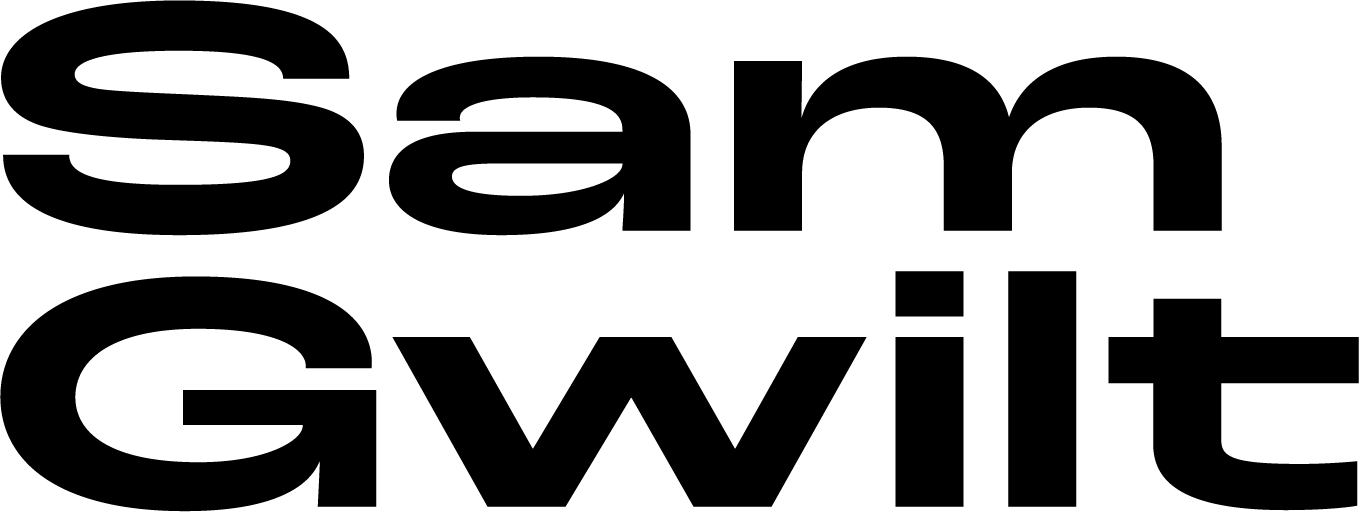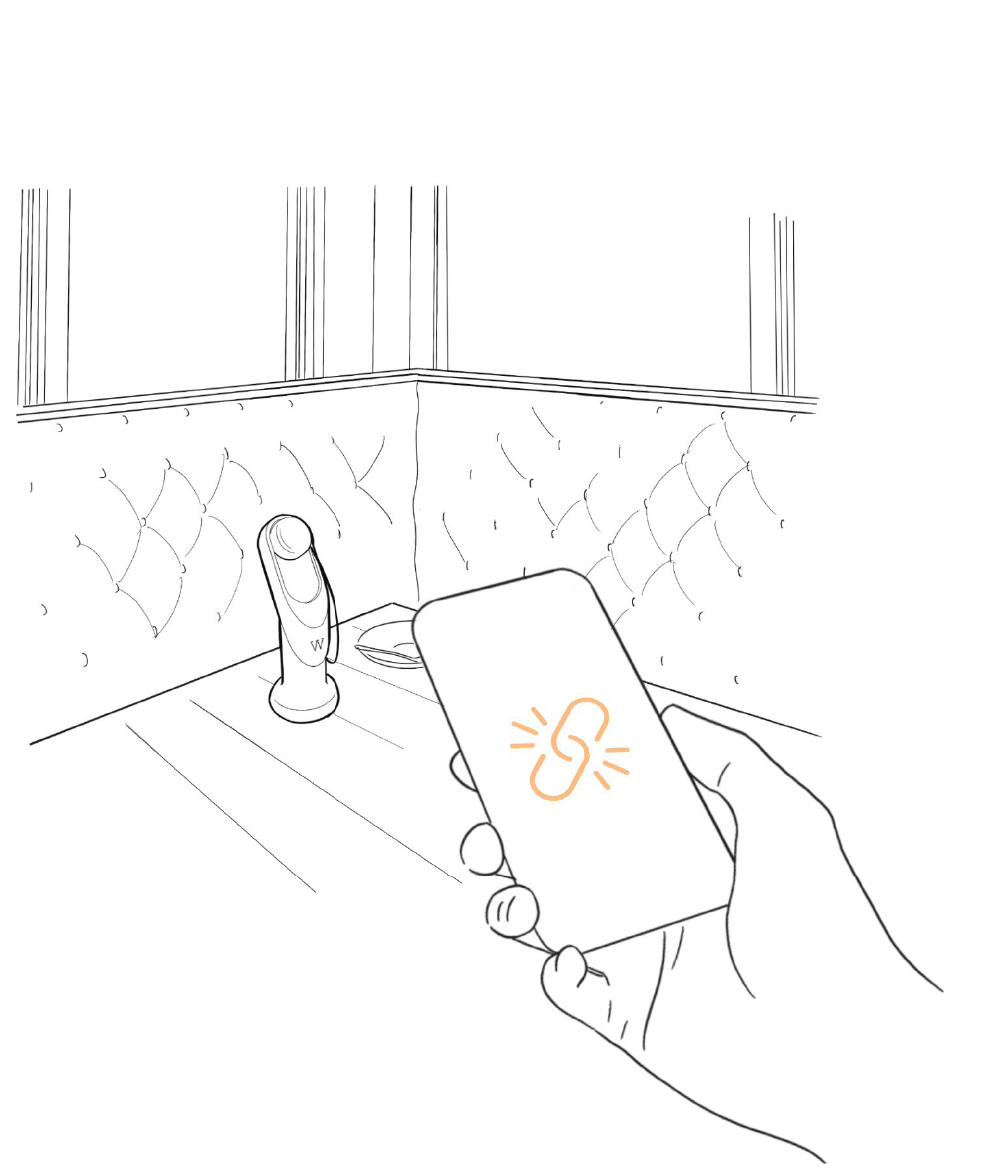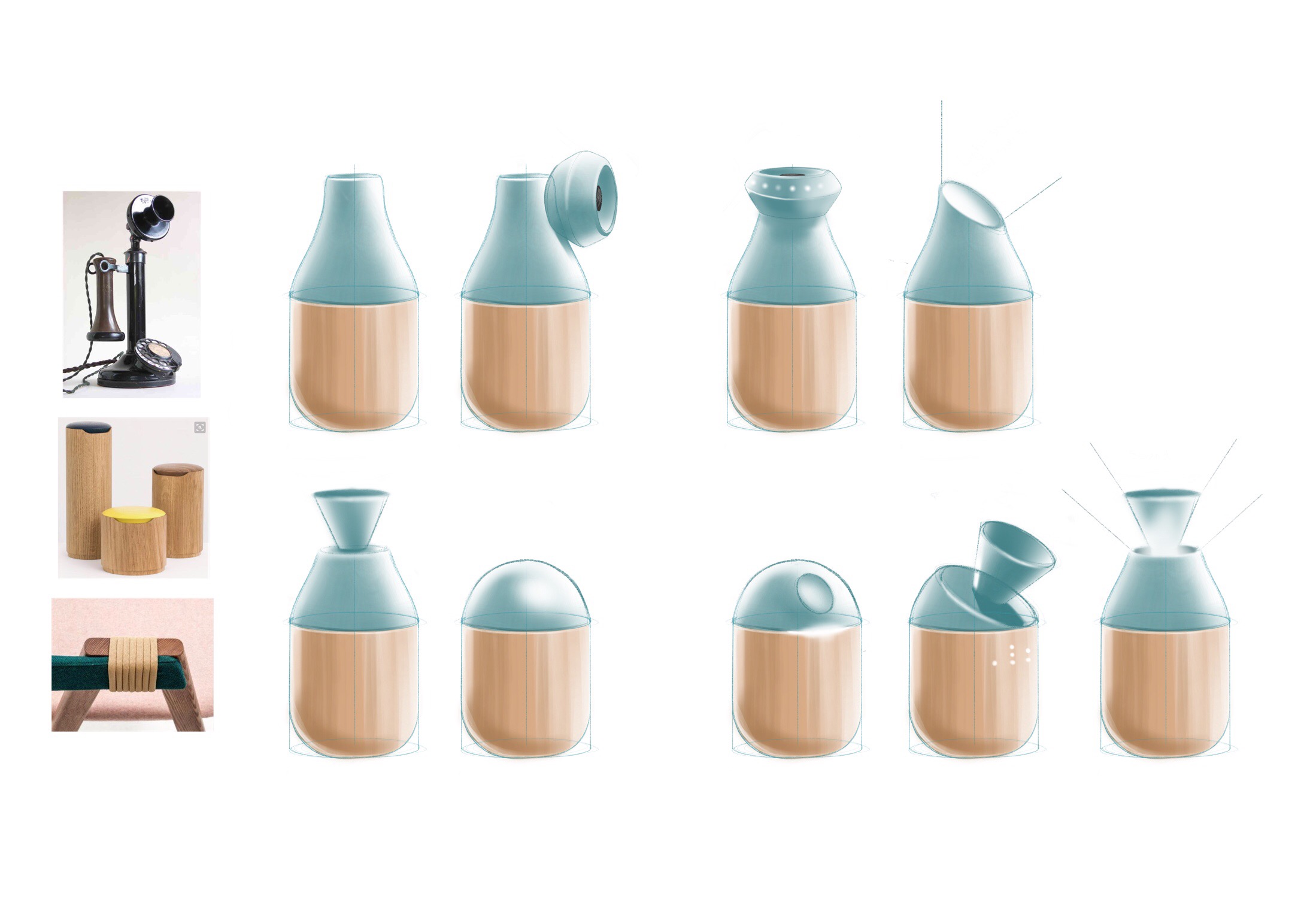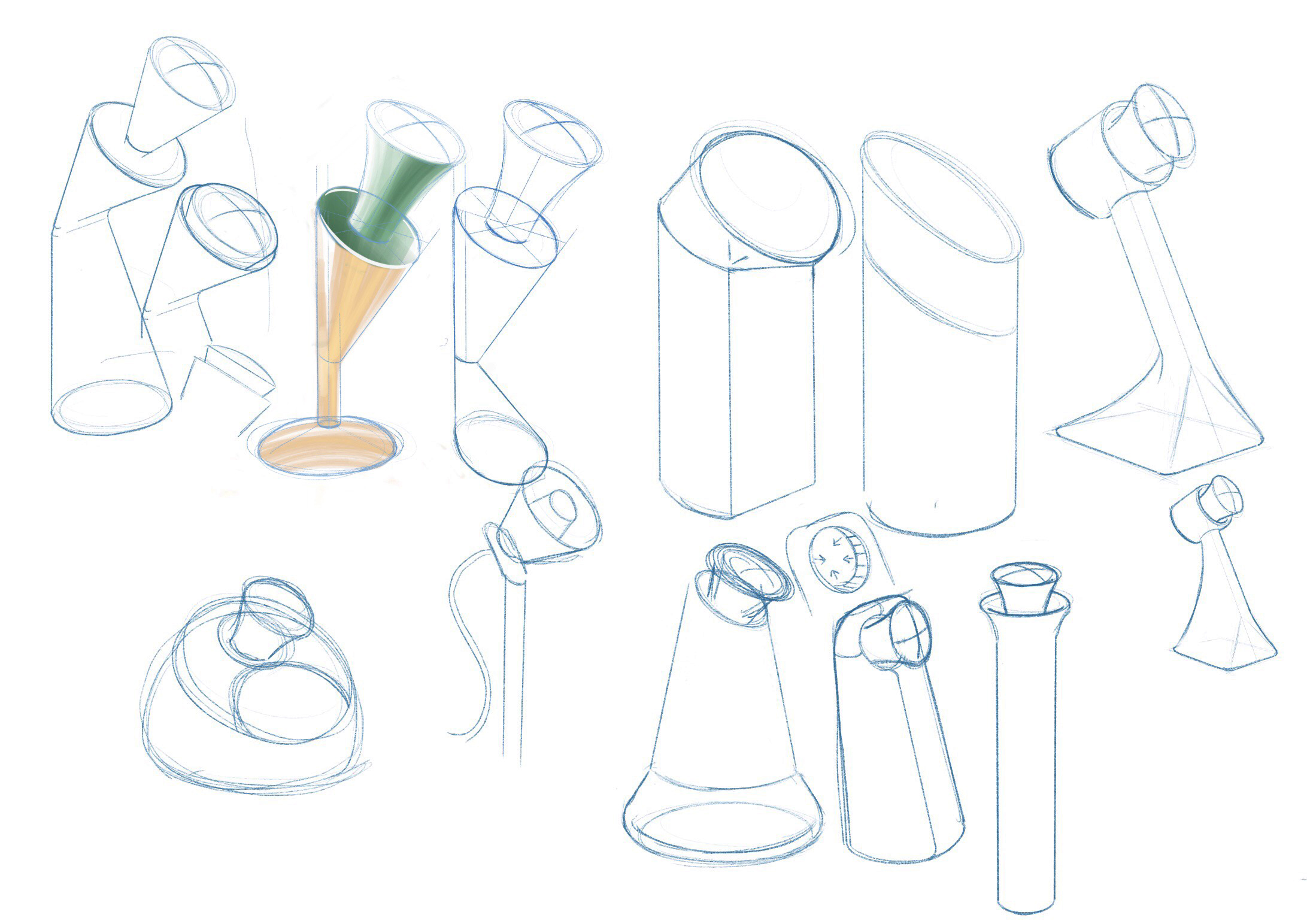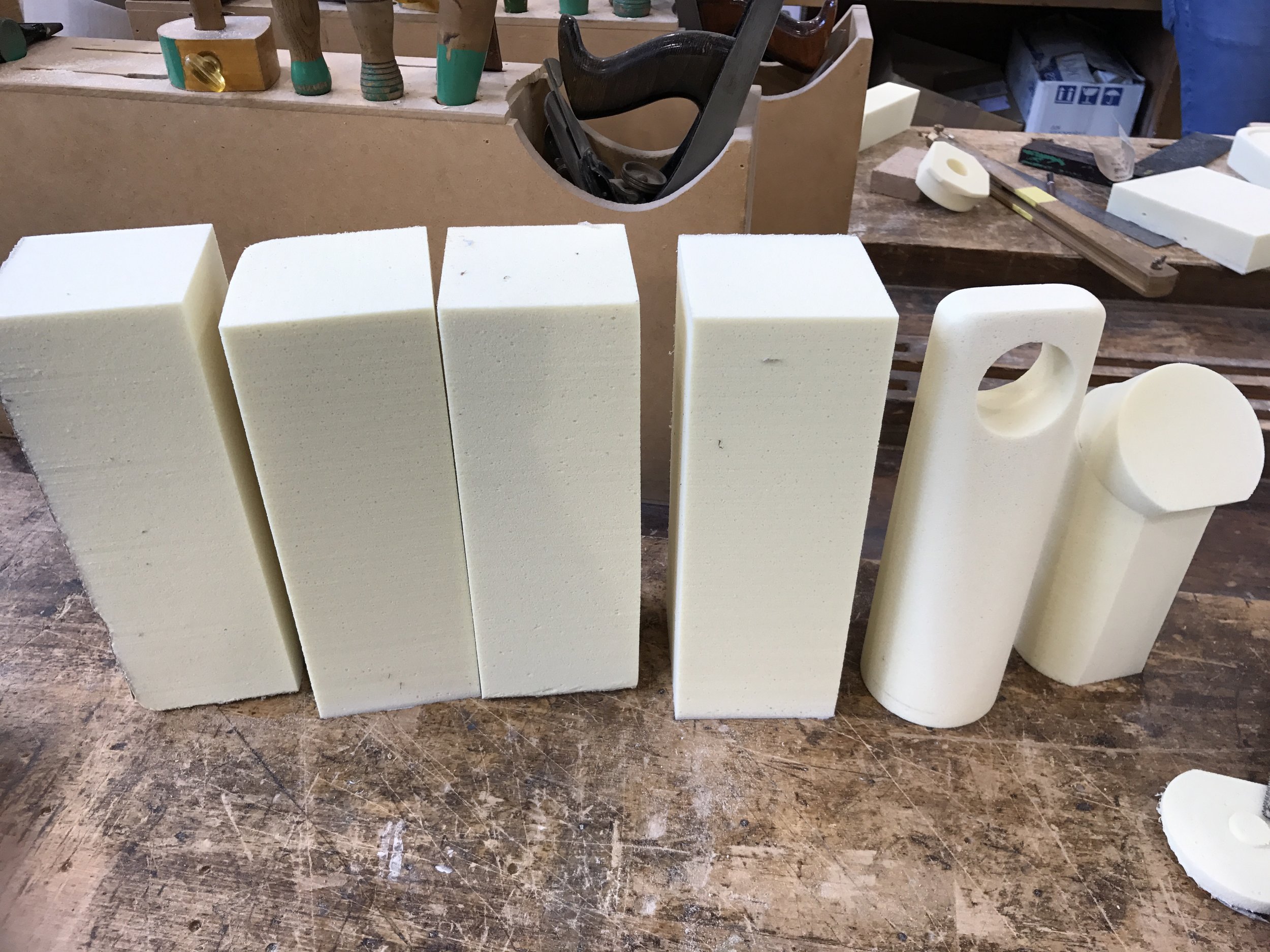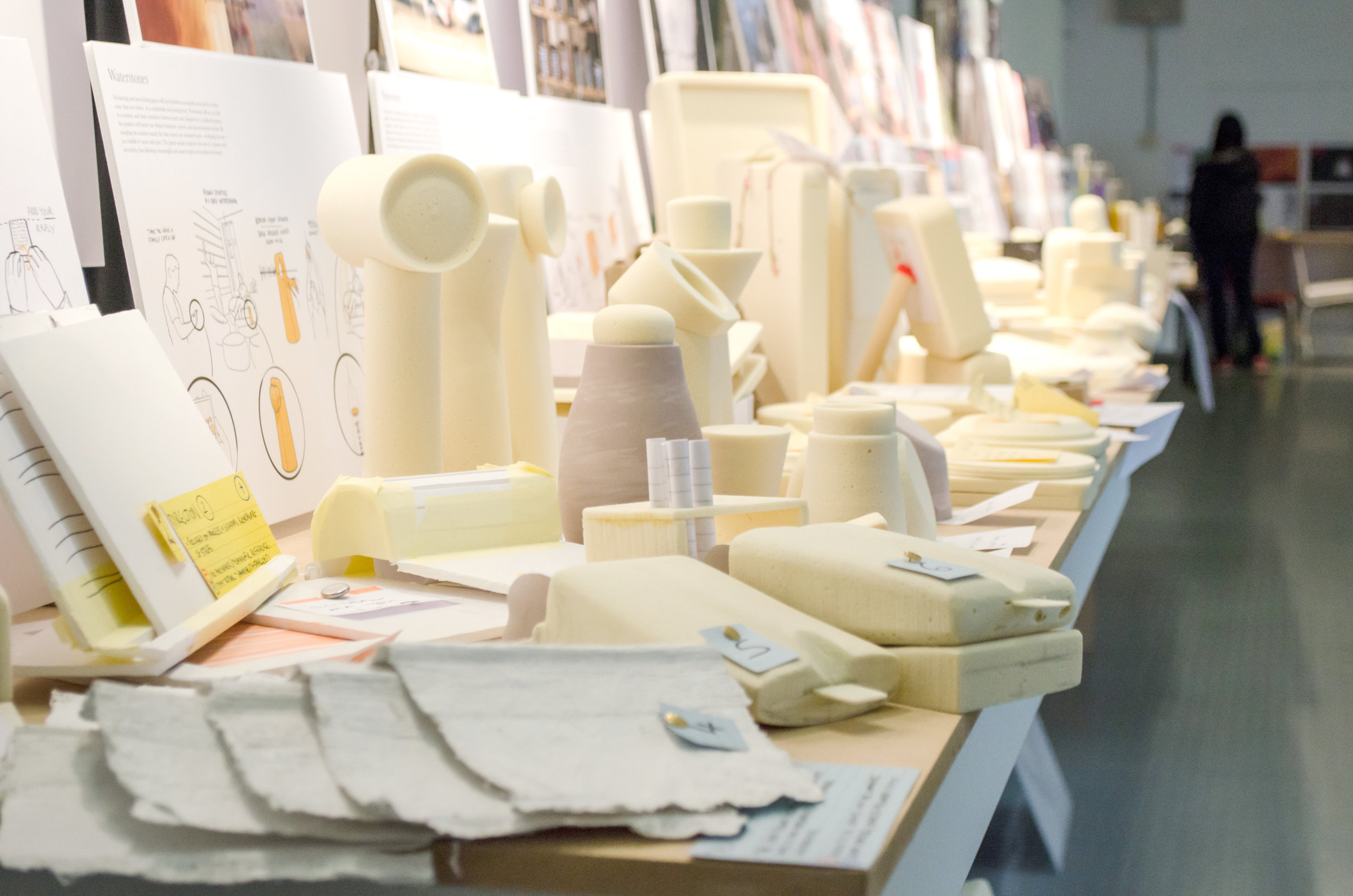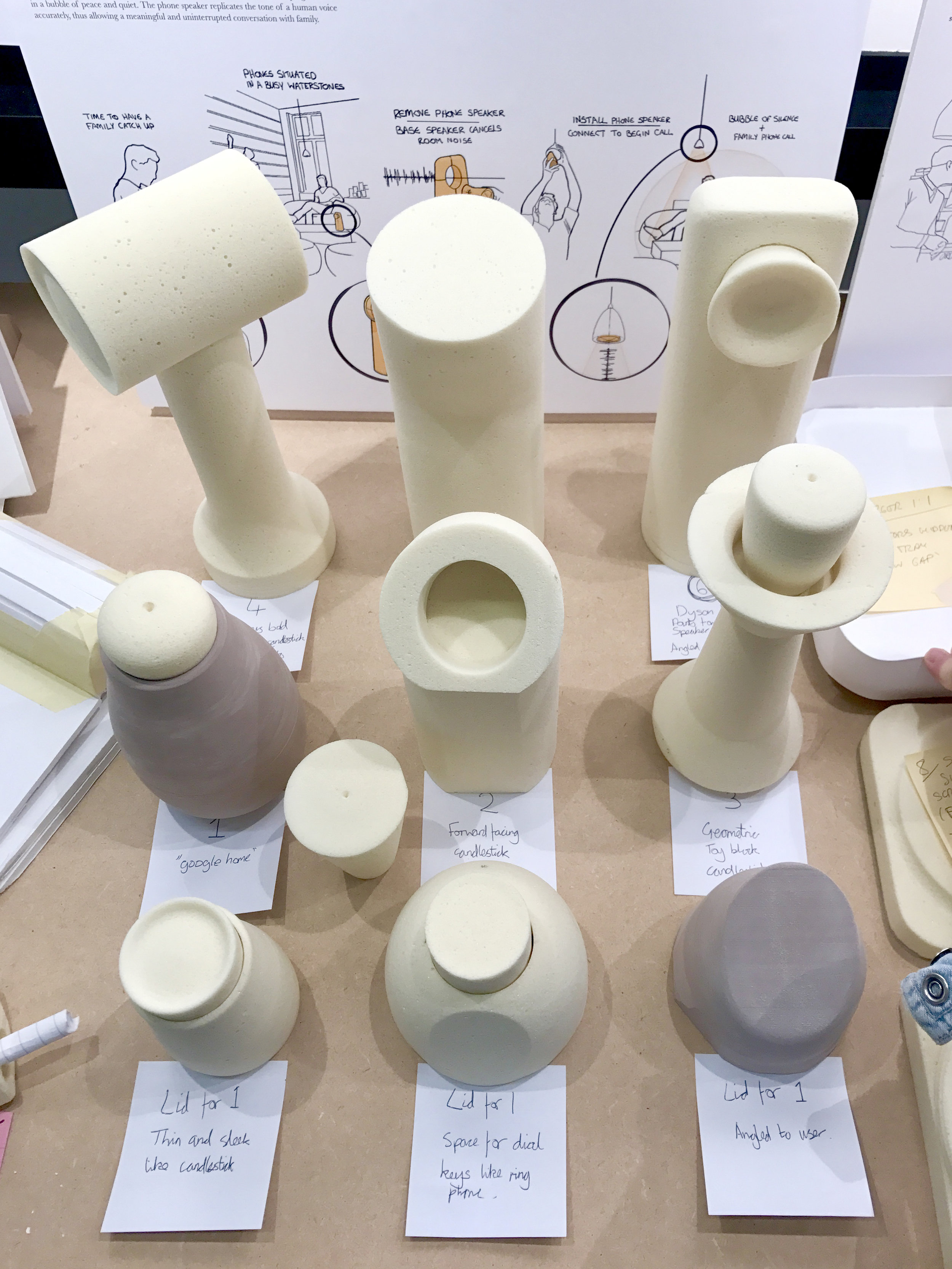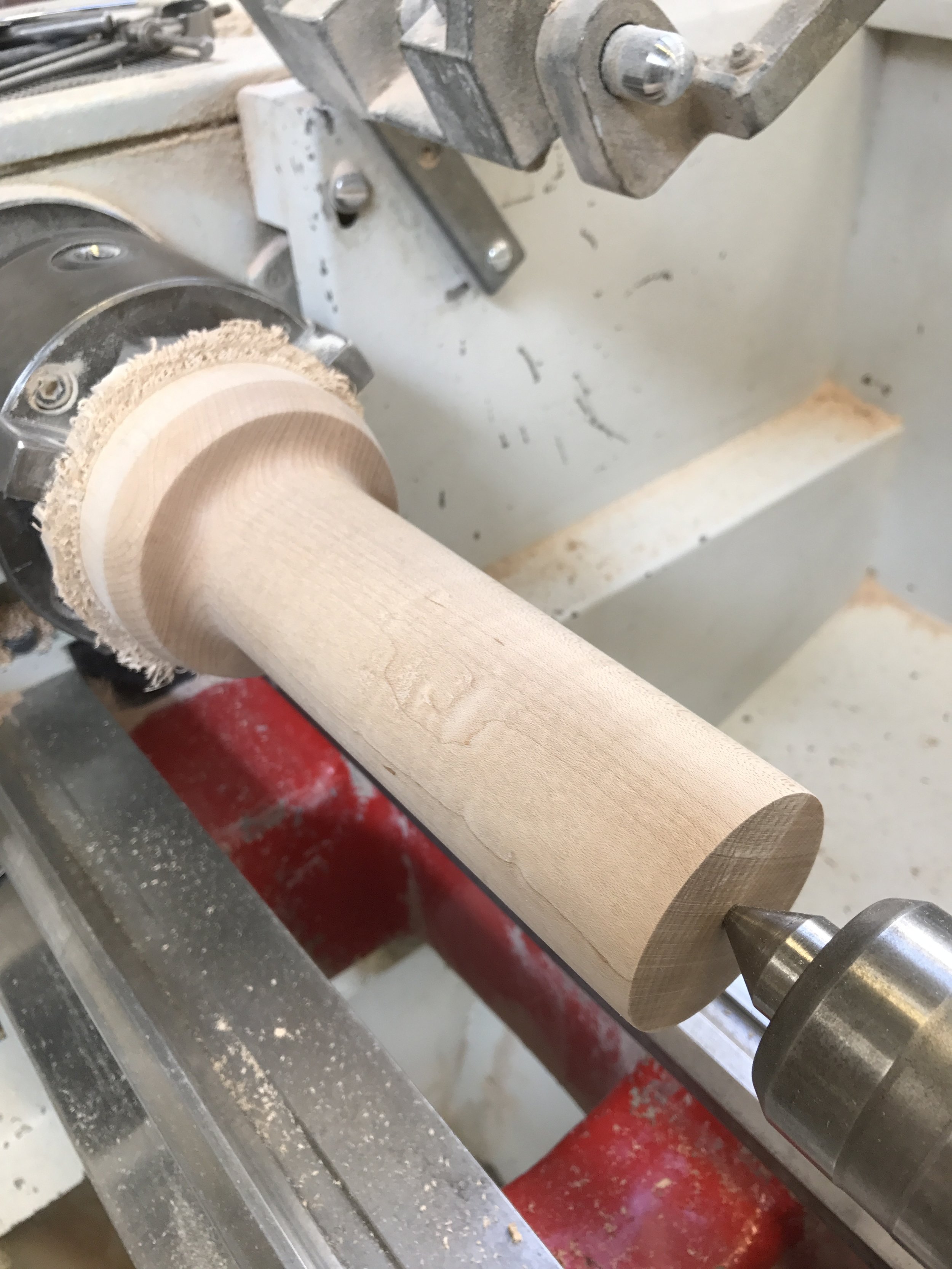This university project saw teams select a brand they believed could benefit from a repositioning within the next ten years. In a group of five, we selected Waterstones and conducted the market research necassary to deduce the consumer landscape, and then repositioned the brand to thrive within that landscape. Once this had been done, we could then each design one of five products to sit within that new brand repositioning.
Form finding was particularly fun for this project. The influence of the analogue phone meant that it was easy to make a recognisable product, but hard to make it futuristic and contemporary. The goal was to create a playful, but not childish, design language across the product range.
The notion of “low-tech, no-tech” was heavily utilised,
as Waterstones would be a brand to showcase tactile interactions over all else.
Bringing the phone into the real world meant changing proportions that looked correct in a sketch, to look correct in 3D. This meant model making and fast prototyping
to generate the block forms to ensure the size and ergonomics made sense.
Take a seat in the lovely lounge area at your local Waterstones
Place your phone near the W to instantly pair devices
Lift the reciever and relax as the room falls silent around you
Place the reciever on the magnetic pad
Use your preferred voice assistant to call your dearest, and enjoy a peaceful chat
Enjoy the large lounge as if it were your own
Bottle up the ambient silence with the reciever after the call
Simply walk away to disconnect your phone ready for the next customer
